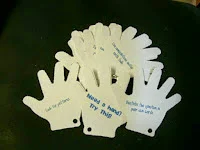Welcome to the Guided Math in Action Book Study hosted by Adventures in Guided Math. Today's discussion is going to focus on Chapters 1 and 2.
While reading the first few chapters, one of the key points that resonated with me was the goal of Guided Math (GM) to meet students where they are so you can take them where they need to go (pg 9). For so long, this has been the goal/emphasis in reading that I am glad to see this is now shifting to math.
Another quote that stuck with me is from pg 11, "It means that if Johnny doesn't get it after you've tried to teach him three different ways, then you try a fourth." We talk about students showing perseverance, and sometimes, as teachers, we too, have to persevere in finding ways to reach all our students. It is the idea of filling a toolbox with ideas and strategies to pick, choose, and revisit as many times as necessary.
Chapter 1 ~ Guided Math: An Introduction
To help foster perseverance in the classroom, I have a bulletin board that addresses the 8 Standards of Mathematical Practice. Perseverance is covered in Standard 1: Make sense of problems and persevere in solving them. As a class, we talk about the Standards of Mathematical Practice, and we anchor back into the practice when students do not show perseverance. It seems simple, but the visual reminder helps students remember what is expected. You can see where these mini posters were downloaded from if you click on the image.
As a class, we also talk about ways to overcome being "stuck" in math. Another strategy I use to foster perseverance is Need a Hand? Try This! Click here to read a previous post. Basically, there are tips on each hand that I encourage students to try before the infamous saying, "I need help." or "I don't get this." or "I can't do this." I encourage students to TRY THREE before ASKING ME.
Chapter 2 ~ Guided Math in a Numerate Environment
I keep a numeracy-rich classroom environment to help develop strong mathematicians. I have found it is better to start the year off simple and then add to the room as learning occurs and needs are recognized.
- I like to use each new poster or anchor chart as part of a learning experience so students can make the connection and see value in it. I have been known to tell my students, "Take a short field trip to the back of the room and reread that poster. Come back and let me know what you learned/remembered." They *LOVE* to take a field trip and often come back grinning with the answer.
- Math time should not be a quiet time. Looking on pg 17, I loved seeing all those -ing verbs that help to foster a numeracy-rich environment. For too long math was thought of as computing. Period. Posing open-ended problems with multiple solutions or multiple entry points of learning can foster rich mathematical discussions where students have to connect, explain, listen, and prove. The Tell Me All You Can Routine (pg 23) not only fosters fluency of thinking, but perseverance to tell ALL you can...and not stop at just one or two ideas.
- I have a space where math manipulatives and math resource books are available for student use. Students know where they are; students know they can use them when needed. Something I was left to think about was when it mentioned on pg 23 that centers are brought to students to save instructional time. So much of math workshop is creating routines to maximize learning.
- You have to love all the wonderful math literature that is available nowadays. No better way to launch a lesson than by reading a quick book about math...whether it is fiction or nonfiction. One book I love to launch the year with is Math Curse by John Scieszka and Lane Smith. It's a great book to make students realize that math is ALL around them! They live in a numeracy-rich environment. They just have to notice!!






